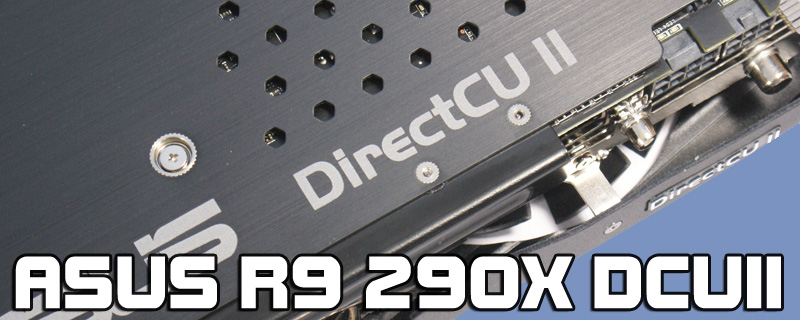ASUS R9 290X DirectCU II OC Review
Conclusion
When the R9 290X arrived it was clear that the Hawaii GPU had enormous potential, and many results were impressive if not jaw-dropping, but it was clear that AMDs decision to not only have the card run so darn hot, but stick such a truly woeful cooler upon it, was seriously hindering the performance we were able to obtain.
The rumours that AMD were forcing manufacturers to retain the stock cooler only emphasised our disquiet. So it’s with a glad heart that we found the ASUS R9 290X DirectCU II OC landing in our office, replete with one of the best 3rd party coolers on the market.
Indeed the gap between a 290X and the ASUS DCUII 290X is tremendous. The additional cooling has enabled ASUS to provide the R9 290X with a 100MHz overclock when compared to the reference model, and we managed to get another 100MHz out of it without having to deafen ourselves. In both scenarios the ASUS card was so much better than the reference AMD model that if it was called the R9 295X we probably wouldn’t think anything of it. In nearly every test it ran with the high-end cards and in some gave us new heights to scale.
Temperatures are still a slight problem when it comes to how warm the rest of your system will become, but ASUS have rebuilt the 290X from the ground up to ensure that instead of crossing your fingers and hoping that the card can tolerate those temperatures, you can be sure that it will. The Uber Mode/Silent Mode switch largely affects the speed of the fans and heat you can expect, with the Silent mode hitting the 95°C mark quietly, handy for cooking bacon, and the Uber mode increasing the volume but dropping those temperatures to a much more manageable 80°C.
It’s no surprise that the ASUS R9 290X DirectCU II looks the part. That cooler is one of our favourites and by leaving you to choose the colour of the stickers, or leave them off entirely, it’s very stealthy and just blends into your rig. We’d like to see some blue stickers included to make the ASUS Pro range of motherboards, but that’s nit-picking. At £499 it’s both expensive and good value. Yes, in comparison to the standard R9 290X it’s very expensive, and knowing that there is a R9 290 DirectCU II on the horizon (which is bound to be the big seller and much more affordable) means that the 290X DCUII is a lot of money in anyone’s book. However, there is a lot of card for your money. ASUS have redesigned the PCB and beefed up all the components to a level that this is the card that the AMD version should have been in the first place.
For being everything that the R9 290X should have been in the first place, and truly unlocking the potential of the Hawaii GPU, the ASUS R9 290X DirectCU II gets our Performance Award. It’s a highly polished Performance Award too.
Thanks to ASUS for supplying the R9 290X DirectCU II OC for review. Discuss your thoughts in the OC3D Forums.




